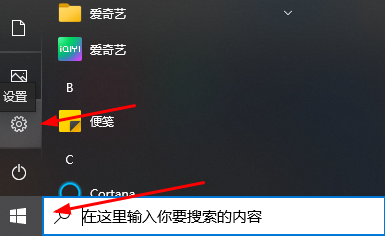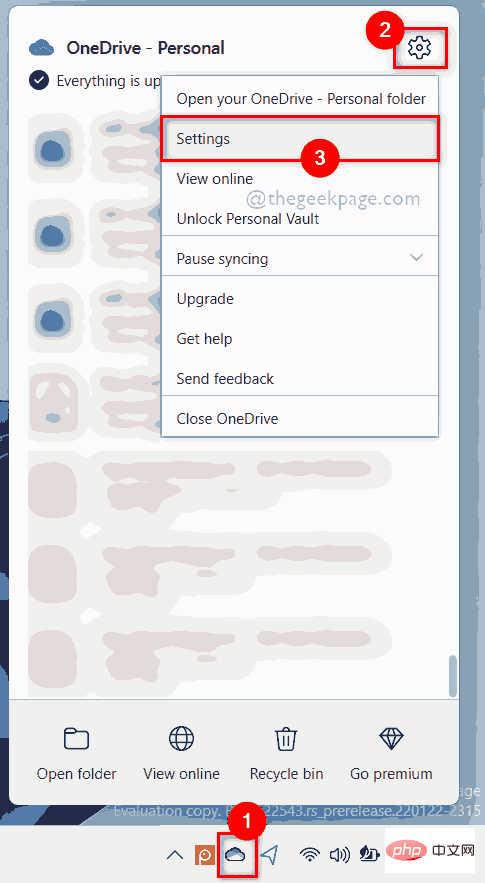 Web Front-end
Web Front-end JS Tutorial
JS Tutorial Detailed explanation of synchronization processing of $.ajax() and $.getJson() in jQuery_jquery
Detailed explanation of synchronization processing of $.ajax() and $.getJson() in jQuery_jquery1. Foreword
Why synchronization is needed? Because sometimes when we register a submit button to submit form data, a series of asynchronous ajax request operations will be performed before the submission action, but the page js code will be executed in order from top to bottom. , if you perform an asynchronous operation during this process, you will not be able to obtain the result returned by the current asynchronous operation, and js will continue to execute the next statement, so we need to synchronize the operation request to obtain the background return data result, and then determine whether the result is consistent before executing. js next statement.
2. Explanation of $.ajax() parameters
url: The address to send the request.
type: The request method (post or get) defaults to get.
timeout: requires a parameter of type Number and sets the request timeout (milliseconds).
async: The default setting is true, all requests are asynchronous requests. Synchronous request, set to false. Note that a synchronous request will lock the browser, and the user must wait for the request to complete before other operations can be performed. -----This is the most important setting factor for synchronization operation
cache: The default is true. If the browser has a cache, the browser’s cached data will be obtained. Setting false will not obtain the cached data
data: Requires parameters of type Object or String, data sent to the server. If it is not a string, it will be automatically converted into a string format
Formula. The get request will be appended to the url. To prevent this automatic conversion, check the processData option. The object must be in key/value format
Formula, for example, {foo1:"bar1",foo2:"bar2"} is converted to &foo1=bar1&foo2=bar2. If it is an array, JQuery will automatically be different
Values correspond to the same name. For example, {foo:["bar1","bar2"]} is converted to &foo=bar1&foo=bar2.
dataType: requires a parameter of String type, the data type expected to be returned by the server. If not specified, JQuery will automatically base the http package on mime
The information returns responseXML or responseText and is passed as a callback function parameter.
The available types are as follows:
xml: Returns an XML document that can be processed with JQuery.
html: Returns plain text HTML information; the included script tag will be executed when inserted into the DOM.
script: Returns plain text JavaScript code. Results are not cached automatically. Unless cache parameters are set. Note that when making remote requests (not under the same domain), all post requests will be converted into get requests.
json: Returns JSON data.
jsonp: JSONP format. When calling a function using the SONP form, such as myurl?callback=?, JQuery will automatically replace the last "?" with the correct function name to execute the callback function.
text: Returns a plain text string.
beforeSend: requires a parameter of Function type. You can modify the function of the XMLHttpRequest object before sending the request, such as adding a custom HTTP header. If false is returned in beforeSend, this ajax request can be canceled. The XMLHttpRequest object is the only parameter.
function(XMLHttpRequest){
This; //The options parameter passed when calling this ajax request
}
complete: requires a parameter of Function type, a callback function called after the request is completed (called when the request succeeds or fails). Parameters: XMLHttpRequest object and a string describing the successful request type.
function(XMLHttpRequest, textStatus){
This; //The options parameter passed when calling this ajax request
}
success: requires parameters of Function type. The callback function called after the request is successful has two parameters.
(1) Data returned by the server and processed according to the dataType parameter.
(2) A string describing the status.
function(data, textStatus){
//data may be xmlDoc, jsonObj, html, text, etc. this;
//The options parameter passed when calling this ajax request
error: requires a parameter of Function type, a function that is called when the request fails. This function has three parameters, namely XMLHttpRequest object, error message, and captured error object (optional).
The ajax event function is as follows:
function(XMLHttpRequest, textStatus, errorThrown){
//Normally, only one of textStatus and errorThrown contains information
This; //The options parameter passed when calling this ajax request
}
contentType: requires a parameter of String type. When sending information to the server, the content encoding type defaults to "application/x-www-form-urlencoded". This default value is suitable for most applications.
dataFilter: requires parameters of Function type, a function that preprocesses the original data returned by Ajax. Provide two parameters: data and type. data is the original data returned by Ajax, and type is the dataType parameter provided when calling jQuery.ajax. The value returned by the function will be further processed by jQuery.
function(data, type){
//Return the processed data
return data;
}
global: is required to be a Boolean type parameter, and the default is true. Indicates whether to trigger the global ajax event. Setting to false will not trigger global ajax events, ajaxStart or ajaxStop can be used to control various ajax events.
ifModified: requires a Boolean type parameter, and the default is false. Only get new data when server data changes. The basis for determining server data changes is the Last-Modified header information. The default value is false, which means header information is ignored.
jsonp: requires parameters of String type, and rewrites the name of the callback function in a jsonp request. This value is used to replace the "callback" part of the URL parameter in a GET or POST request such as "callback=?". For example, {jsonp:'onJsonPLoad'} will cause "onJsonPLoad=?" to be passed to the server.
username: is required to be a String type parameter, used to respond to the username of the HTTP access authentication request.
password: requires a String type parameter, which is the password used to respond to the HTTP access authentication request.
processData: requires a Boolean type parameter, and the default is true. By default, the data sent will be converted to an object (not technically a string) to match the default content type "application/x-www-form-urlencoded". If you want to send DOM tree information or other information that you do not want to convert, set it to false.
scriptCharset: is required to be a String type parameter. It will be used to force the character set (charset) to be modified only when the dataType is "jsonp" or "script" during the request, and the type is GET. Usually used when the local and remote content encodings are different.
3. $.getJson() synchronization settings
$.getJson() itself is an asynchronous operation method and needs to be set up before it can be synchronized
Add $.ajaxSettings.async = false; (synchronous execution) before execution. After executing your code, return to $.ajaxSettings.async = true in time; (asynchronous execution) otherwise it will affect the code in other places that needs to be executed asynchronously. .
4. Specific operation examples
1. $.ajax()
//点击新增按钮,新增数据
$("#btnAdd").click(function () {
var bool = true;//存储异步请求结果是否通过
//1、验证优惠额度正确性
var index = parseInt($("#intGiftMold").val());
if (index == 1) {
//满减
var reg = /^[0-9]+,[0-9]+$/;
if (!reg.test($("#strDiscounts").val())) {
$.messager.alert('错误提示', '满减优惠额度格式不正确', 'error');
return false;
}
}
else if (index == 2) {
var reg = /^0\.[0-9]+$/;
if (!reg.test($("#strDiscounts").val())) {
$.messager.alert('错误提示', '折扣优惠额度格式不正确', 'error');
return false;
}
}
else if (index == 3) {
var reg = /^[1-9]+[0-9]$/;
if (!reg.test($("#strDiscounts").val())) {
$.messager.alert('错误提示', '指定金额优惠额度格式不正确', 'error');
return false;
}
}
//2、验证优惠范围正确性
var index = parseInt($("#intGiftRange").val());
if (index == 1) { //选择全站
}
else if (index == 3) { //判断商品ID
$.ajax({
type: "post",
url: "Gift_Add.aspx",
cache: false,
async: false, //设置同步了~~~~~~~~~
dataType: "json",
data: { "method": "isExistInfoTitle", "intInfoID": $("#intInfoID").val() },
success: function (data) {
if (data.result == "false") {
$.messager.alert('错误提示', '商品ID不存在', 'error');
bool = false;
$("#isExistInfoTitle").css({ "display": "" });
}
else {
$("#isExistInfoTitle").css({ "display": "none" });
bool = true;
}
}
});
}
});
}
if (bool == false) {//如果bool为false才返回,true继续往下走
return false; //不能在异步方法里面return,不起作用
}
var validate = $("#form").form("validate");
if (!validate) {//表单验证不通过
return false;
}
//当上面全部验证通过了执行新增操作
$.messager.confirm('温馨提示', '是否确认添加', function (r) {
if (r) {
$.post("Gift_Add.aspx?method=addGift", $("#form").serialize(), function (data) {
$.messager.alert('成功提示', '添加成功', 'info');
});
}
});
});
2. $.getJson()
//点击新增按钮,新增数据
$("#btnAdd").click(function () {
var bool = true;//存储异步请求结果是否通过
//1、验证优惠额度正确性
var index = parseInt($("#intGiftMold").val());
if (index == 1) {
//满减
var reg = /^[0-9]+,[0-9]+$/;
if (!reg.test($("#strDiscounts").val())) {
$.messager.alert('错误提示', '满减优惠额度格式不正确', 'error');
return false;
}
}
else if (index == 2) {
var reg = /^0\.[0-9]+$/;
if (!reg.test($("#strDiscounts").val())) {
$.messager.alert('错误提示', '折扣优惠额度格式不正确', 'error');
return false;
}
}
else if (index == 3) {
var reg = /^[1-9]+[0-9]$/;
if (!reg.test($("#strDiscounts").val())) {
$.messager.alert('错误提示', '指定金额优惠额度格式不正确', 'error');
return false;
}
}
//2、验证优惠范围正确性
var index = parseInt($("#intGiftRange").val());
if (index == 1) { //选择全站
}
else if (index == 3) { //判断商品ID
$.ajaxSettings.async = false; //设置getJson同步
$.getJSON("Gift_Add.aspx", { "method": "isExistInfoTitle", "intInfoID": $("#intInfoID").val() }, function (data) {
if (data.result == "false") {
$.messager.alert('错误提示', '商品ID不存在', 'error');
bool = false;
$("#isExistInfoTitle").css({ "display": "" });
}
else {
$("#isExistInfoTitle").css({ "display": "none" });
bool = true;
}
});
$.ajaxSettings.async = true;//设置getJson异步
}
});
}
if (bool == false) {//如果bool为false才返回,true继续往下走
return false; //不能在异步方法里面return,不起作用
}
var validate = $("#form").form("validate");
if (!validate) {//表单验证不通过
return false;
}
//当上面全部验证通过了执行新增操作
$.messager.confirm('温馨提示', '是否确认添加', function (r) {
if (r) {
$.post("Gift_Add.aspx?method=addGift", $("#form").serialize(), function (data) {
$.messager.alert('成功提示', '添加成功', 'info');
});
}
});
});
Summary:
$.ajax is the AJAX implementation of the traditional get and post methods
$.getJSON is jsonp (remote data reading) class AJAX implementation
The reason why it is called AJAX-like is that although it is encapsulated in the ajax class of jq, it is actually implemented through the script node
The difference between $.getJSON and $.ajax is:
When sending, $.getJSON will pass a callback function name (jq will give one by default)
When receiving, this callback function will be called
The server side of $.getJSON must append the incoming callback function name before the json data
Because of this, the returned string is no longer json (the format is wrong)
Therefore $.ajax with dataType: "json" attribute will enter the error branch
 解决win11中同时播放耳机和音响的问题Jan 06, 2024 am 08:50 AM
解决win11中同时播放耳机和音响的问题Jan 06, 2024 am 08:50 AM一般来说,我们只需要同时使用耳机或者音响的其中一个设备,但是有些朋友反映在win11系统中,遇到了耳机和音响一起响的问题,其实我们可以在realtek面板中将它关闭,就可以了,下面一起来看一下吧。win11耳机和音响一起响怎么办1、首先在桌面上找到并打开“控制面板”2、进入控制面板,在其中找到并打开“硬件和声音”3、然后再找到一个喇叭图标的“Realtek高清晰音频管理器”4、选择“扬声器”再点击“后面板”进入扬声器设置。5、打开之后我们可以看到设备类型,如果要关闭耳机就取消勾选“耳机”,如果要
 您同步的文件夹中的一个或多个项目不匹配Outlook错误Mar 18, 2024 am 09:46 AM
您同步的文件夹中的一个或多个项目不匹配Outlook错误Mar 18, 2024 am 09:46 AM当您在您的同步文件夹中发现一个或多个项目与Outlook中的错误消息不匹配时,这可能是因为您更新或取消了会议项目。这种情况下,您会看到一条错误消息,提示您的本地数据版本与远程副本存在冲突。这种情况通常发生在Outlook桌面应用程序中。您同步的文件夹中的一个或多个项目不匹配。若要解决冲突,请打开这些项目,然后重试此操作。修复同步的文件夹中的一个或多个项目不匹配Outlook错误在Outlook桌面版中,当本地日历项与服务器副本发生冲突时,可能会遇到问题。不过,幸运的是,有一些简单的方法可以帮助您
 MySql的数据迁移和同步:如何实现多台服务器之间的MySQL数据迁移和同步Jun 15, 2023 pm 07:48 PM
MySql的数据迁移和同步:如何实现多台服务器之间的MySQL数据迁移和同步Jun 15, 2023 pm 07:48 PMMySQL是一个非常流行的开源关系型数据库管理系统,广泛应用于各种Web应用、企业系统等。在现代业务的应用场景下,大多数的MySQL数据库需要部署在多台服务器上,以提供更高的可用性和性能,这就需要进行MySQL数据的迁移和同步。本文将介绍如何实现多台服务器之间的MySQL数据迁移和同步。一.MySQL数据迁移MySQL数据迁移指的是将MySQL服务器中的数
 教你如何将win10剪贴板与手机同步Jan 06, 2024 am 09:18 AM
教你如何将win10剪贴板与手机同步Jan 06, 2024 am 09:18 AMwin10剪贴板有个非常好用的功能就是跨设备云储存功能,非常的好用可以帮助用户PC设备和手机设备同步复制黏贴。设置的方法非常简单,只要在系统里的剪切板设置就好。win10剪贴板同步到手机1、首先点击左下角的开始,进入设置。2、然后去点击“系统”。3、选择左侧的“剪贴板”。4、最后在右边的“跨设备同步”中点击登录,然后选择手机就好了。
 如何在 Windows 11 的 OneDrive 中选择要同步的特定文件夹Apr 13, 2023 pm 04:22 PM
如何在 Windows 11 的 OneDrive 中选择要同步的特定文件夹Apr 13, 2023 pm 04:22 PM您系统上的 OneDrive 应用程序将所有文件和文件夹存储在云端。但有时用户不希望某些文件或文件夹被存储并占用限制为 5 GB 的 OneDrive 空间而无需订阅。为此,OneDrive 应用程序中有一个设置,允许用户选择要在云上同步的文件或文件夹。如果您也在寻找这个,那么这篇文章将帮助您在 Windows 11 系统的 OneDrive 中选择要同步的文件夹或文件。如何在 Windows 11 的 OneDrive 中选择要同步的某些文件夹注意:确保 OneDrive 应用程序已连接并同步
 百度云同步盘怎么同步Feb 23, 2024 pm 01:22 PM
百度云同步盘怎么同步Feb 23, 2024 pm 01:22 PM百度云同步盘怎么同步?百度云同步盘中可以选择文件来同步,但是多数的用户不知道如何同步百度云文件,接下来就是小编为用户带来的百度云同步盘同步方法图文教程,感兴趣的用户快来一起看看吧!百度云同步盘怎么同步1、首先进入电脑桌面,右键点击【百度云同步盘】图标,选择【设置】;2、之后展开服务小窗口,切换到【高级设置】页面点击【选择文件夹】;3、最后切换到下图的页面,勾选需要同步的文件点击【确定】即可。
 Python 并发编程中的锁与同步:保持你的代码安全可靠Feb 19, 2024 pm 02:30 PM
Python 并发编程中的锁与同步:保持你的代码安全可靠Feb 19, 2024 pm 02:30 PM并发编程中的锁与同步在并发编程中,多个进程或线程同时运行,这可能会导致资源争用和不一致性问题。为了解决这些问题,需要使用锁和同步机制来协调对共享资源的访问。锁的概念锁是一种机制,它允许一次只有一个线程或进程访问共享资源。当一个线程或进程获得锁时,其他线程或进程将被阻止访问该资源,直到锁被释放。锁的类型python中有几种类型的锁:互斥锁(Mutex):确保一次只有一个线程或进程可以访问资源。条件变量:允许线程或进程等待某个条件,然后获取锁。读写锁:允许多个线程同时读取资源,但只允许一个线程写入资
 emmo日记如何同步Feb 27, 2024 pm 06:16 PM
emmo日记如何同步Feb 27, 2024 pm 06:16 PMEmmo是一款出色的日常生活记录软件,它提供了智能的记录功能和各种实用工具,帮助你详细记录生活中的点点滴滴。如果你想全面记录每天发生的事情,Emmo绝对是你的不二之选。通过这款软件,你可以在手机上轻松完成每天的日记,而且功能非常全面,满足你的各种需求。那么很多用户们还不清楚emmo日记中究竟该如何同步自己的日记,让大家在不同的设备中都能续写日记,想要了解的玩家们就快来跟着本文继续阅读吧。emmo心情日记怎么同步?1、点击左下角的菜单键2、登录你的账号3、退回到主界面,点击右上角的云朵按钮4、点击


Hot AI Tools

Undresser.AI Undress
AI-powered app for creating realistic nude photos

AI Clothes Remover
Online AI tool for removing clothes from photos.

Undress AI Tool
Undress images for free

Clothoff.io
AI clothes remover

AI Hentai Generator
Generate AI Hentai for free.

Hot Article

Hot Tools

PhpStorm Mac version
The latest (2018.2.1) professional PHP integrated development tool

Dreamweaver Mac version
Visual web development tools

Notepad++7.3.1
Easy-to-use and free code editor

MinGW - Minimalist GNU for Windows
This project is in the process of being migrated to osdn.net/projects/mingw, you can continue to follow us there. MinGW: A native Windows port of the GNU Compiler Collection (GCC), freely distributable import libraries and header files for building native Windows applications; includes extensions to the MSVC runtime to support C99 functionality. All MinGW software can run on 64-bit Windows platforms.

SublimeText3 Mac version
God-level code editing software (SublimeText3)





